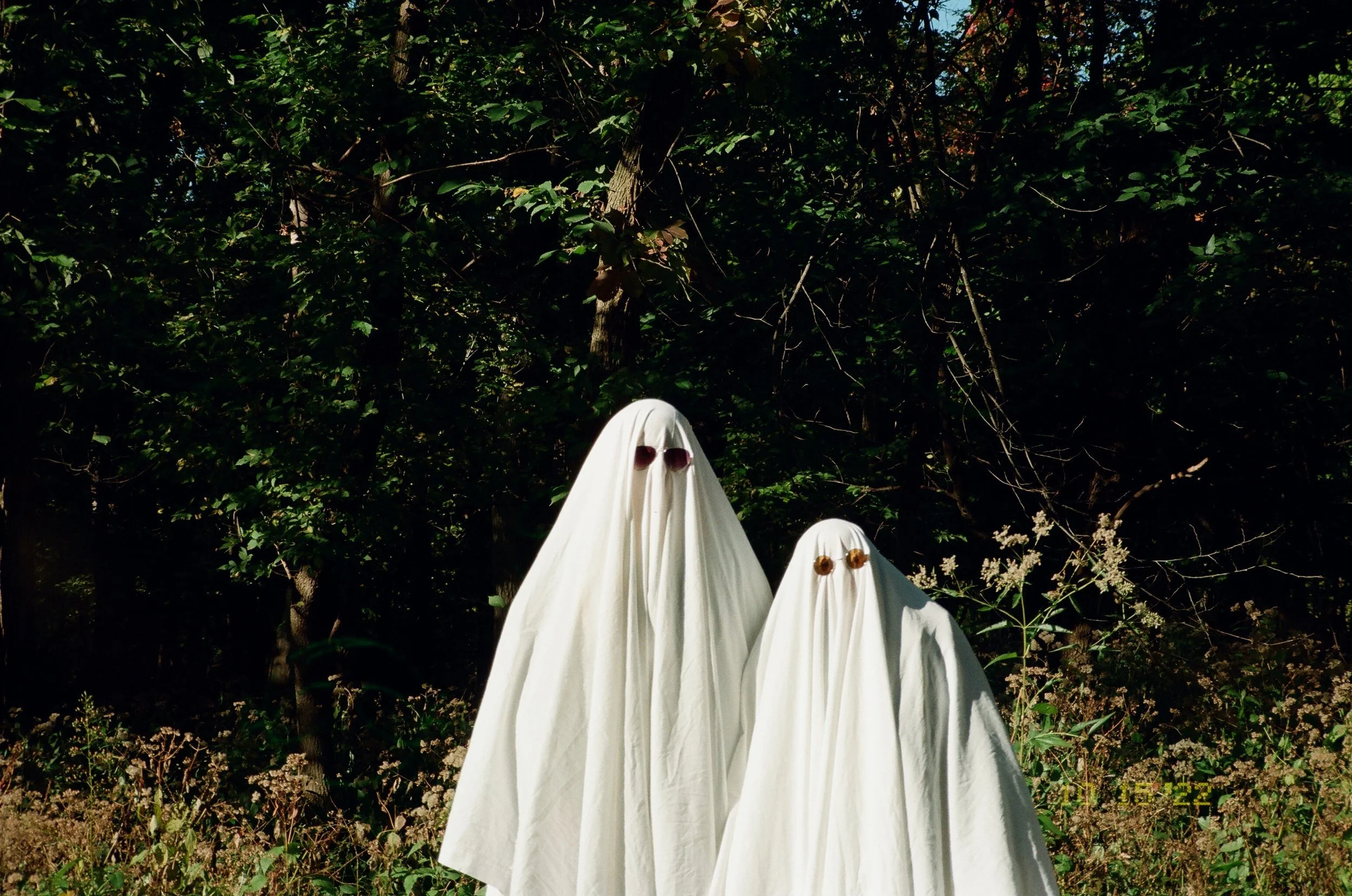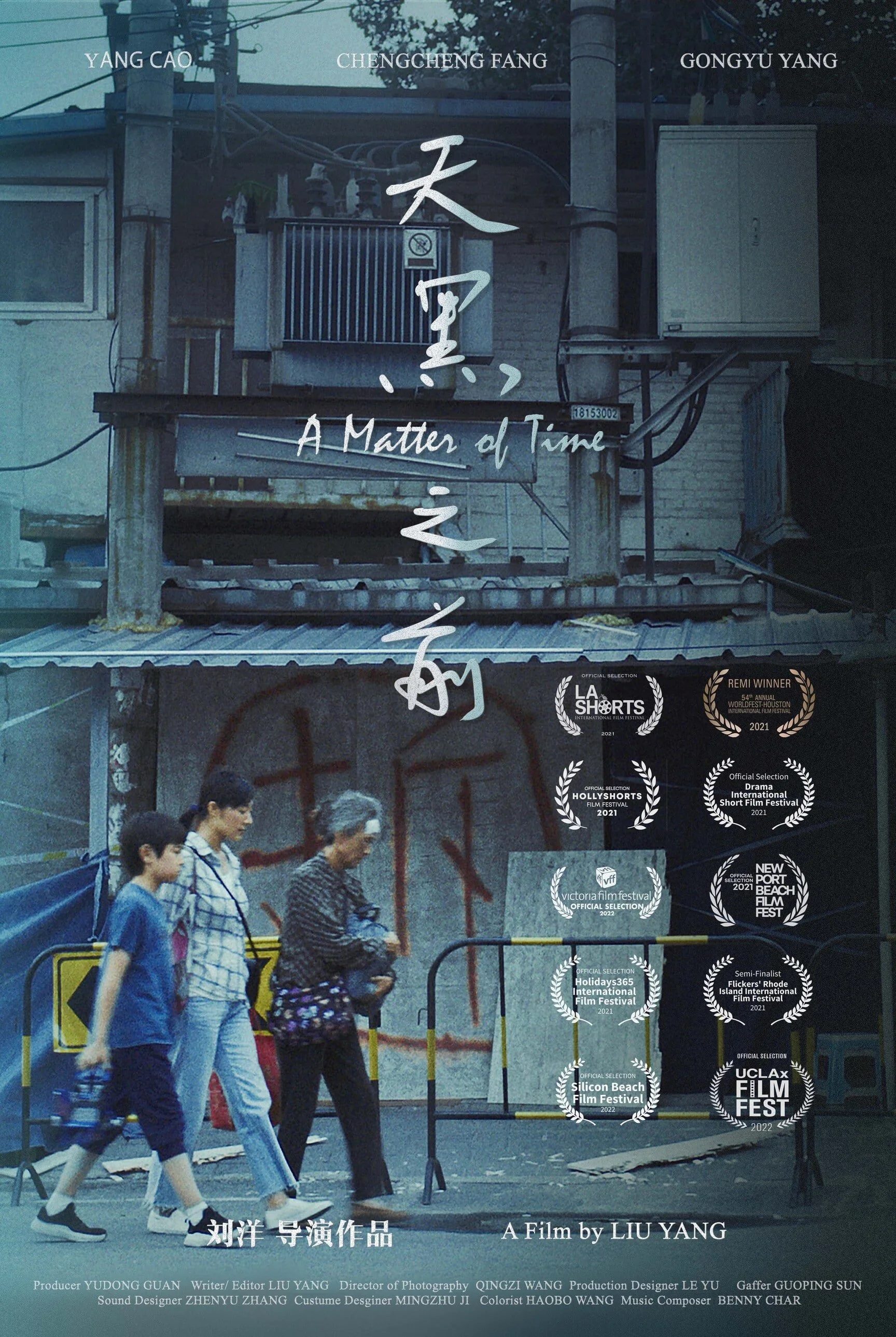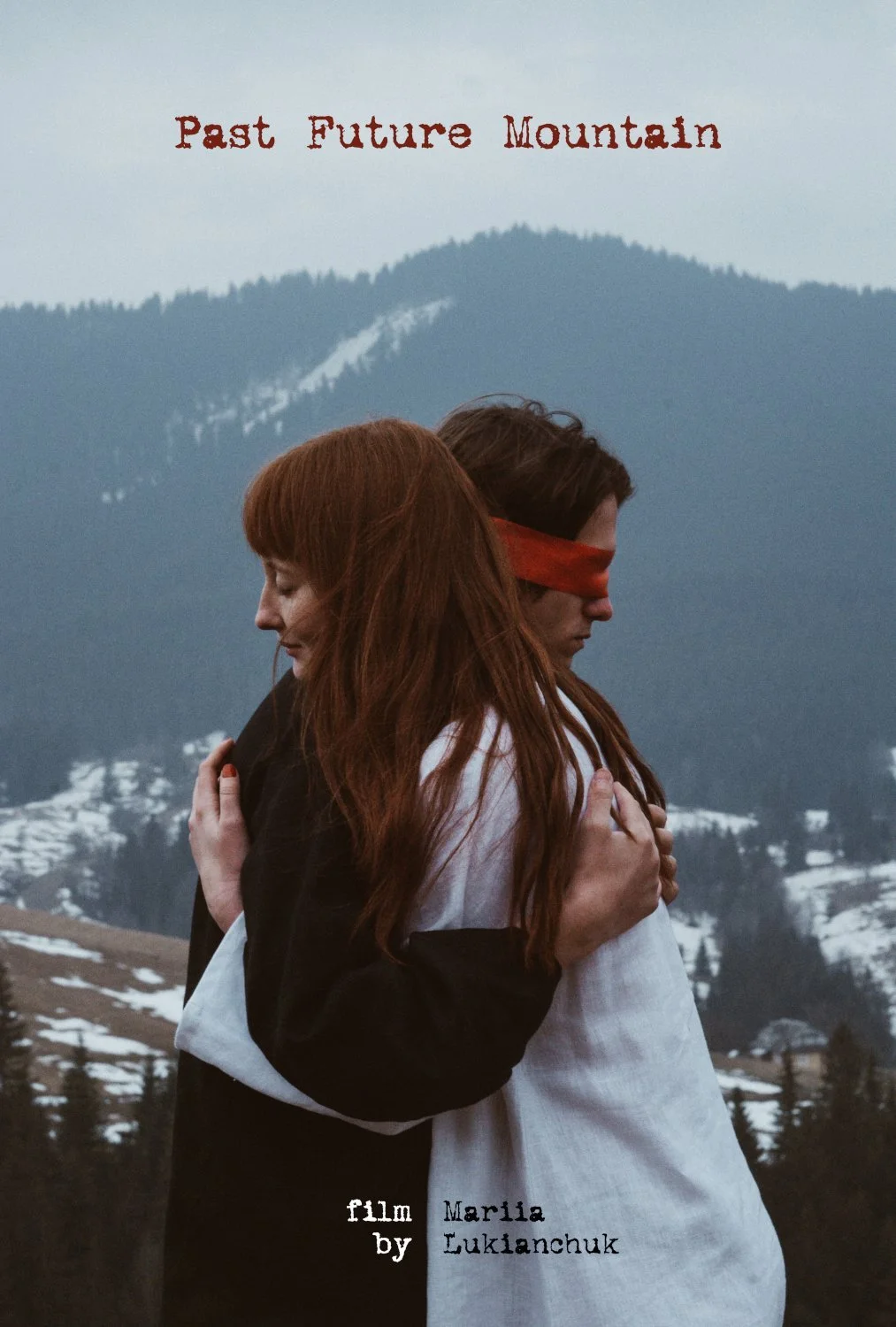INTERVIEW | Jiaying Jing
10 Questions with Jiaying Jing
Jiaying is a filmmaker whose work explores the intricacies of human emotion and the societal forces that shape our lives. Her storytelling delves into themes of identity, gender, and societal expectations, influenced by her experiences as an Asian woman navigating the challenges of Hollywood. Through her films, Jiaying seeks to uncover hidden truths and amplify marginalized voices, crafting narratives that resonate both personally and universally.
Jiaying views film as a transformative tool—one that provokes thought, inspires action, and fosters empathy. Her short films LIMINAL and fragile exemplify this approach. LIMINAL, a selection of the Ffilmic and Independent Shorts Awards, employs experimental techniques to examine nihilism and the search for meaning, illustrating the human capacity to create purpose amidst chaos. In contrast, fragile uses a suspenseful narrative to critique hidden misogyny and challenge societal norms, sparking reflection on gender dynamics. Together, these works highlight Jiaying’s commitment to addressing pervasive yet often invisible issues through nuanced storytelling and layered symbolism.
Jiaying Jing - Portrait
Growing up in China and later moving to the United States, Jiaying developed a dual cultural perspective that informs her creative vision. Her work seeks to bridge these two worlds, creating narratives that resonate globally while honouring her roots. Passionate about contributing to the burgeoning Chinese film market, Jiaying combines her international experience with a feminist lens to craft stories that inspire and empower.
Ultimately, Jiaying aims to create films that challenge conventions, foster connection, and endure over time. Through her lens, she illuminates the unseen, celebrates resilience, and reminds audiences of their shared humanity.
LIMINAL, film, 3M, 2024 © Jiaying Jing
INTERVIEW
Please tell our readers how you developed into the artist you are today.
My journey as an artist has been shaped by the tension between two worlds. Growing up in China, I was immersed in a highly structured environment. This discipline was ingrained in me and felt like the only reality. But when I moved to the U.S. as an adult, I experienced a profound cultural shock. The sudden freedom was both exhilarating and disorienting, forcing me to redefine my sense of self.
After spending four years in the U.S., I returned to China during the pandemic and realized I no longer fully belonged to either place. This in-between existence—neither entirely Chinese nor fully American—ignited my passion for storytelling. I became fascinated by themes of identity, belonging, and alienation, using film as a medium to explore the complexities of human nature and the spaces where cultures collide. Through my work, I seek to capture the nuances of this dual perspective, embracing both the structure of my past and the fluidity of my present.
What first drew you to filmmaking, and how did you choose this medium over others?
My journey into filmmaking began with a trip back to my hometown in China, where I encountered the harsh realities faced by children left behind in rural areas. One child's story struck me deeply, and I wanted to help—but all I had with me was a camera. That moment sparked an idea: I could tell his story through film and share it with a wider audience to raise awareness. With his consent, I stayed in the village for several days, taking on every role—from directing to filming to editing—on my own.
When I completed the documentary, I organized a screening and successfully raised funds to provide books for the child's entire school. That experience was transformative. It made me realize that film is more than just a storytelling medium—it has the power to create real change. Unlike other art forms, filmmaking allows me to capture raw human emotions, immerse audiences in untold perspectives, and bridge cultural and social gaps.
After moving to Los Angeles, I immersed myself in filmmaking, collaborating on numerous short films and eventually contributing to feature productions. Each project reinforced my belief in the power of cinema—not just as an artistic expression but as a means to give voice to stories that might otherwise go unheard. This is why I chose film over any other medium: it's dynamic, immersive, and capable of making an impact in a way that nothing else can.
LIMINAL, film, 3M, 2024 © Jiaying Jing
LIMINAL, film, 3M, 2024 © Jiaying Jing
How did your upbringing in China and eventual move to the United States influence your decision to pursue this career?
From the beginning of my journey in filmmaking, I was deeply influenced by American filmmakers like Stanley Kubrick and David Lynch. As I explored cinema from different countries, I realized that the kind of films I wanted to create could best be achieved in the U.S. The artistic freedom and diversity of voices here aligned with my vision, making Los Angeles the ideal place to expand my creative practice.
Being in a city where filmmakers from around the world converge has given me the opportunity to collaborate, exchange ideas, and push creative boundaries. This multicultural environment constantly fuels my inspiration and reinforces my commitment to telling stories that bridge different perspectives.
Starting with independent productions, I worked across various film sets, gaining hands-on experience and refining my craft. Through each project, I've built strong relationships with talented collaborators and deepened my passion for storytelling. As my work evolved, so did my determination to bring my own stories to life—films that reflect my unique perspective while resonating with a global audience.
How does your dual cultural perspective influence how you approach filmmaking, especially when creating narratives for Western and Eastern audiences?
My dual cultural background has shaped my approach to storytelling in a way that allows me to navigate the nuances of both Eastern and Western audiences. Rather than simply presenting cultural differences, I focus on the spaces in between—the areas where perspectives overlap, diverge, and evolve.
When crafting narratives, I consider how visual language, pacing, and thematic depth resonate differently across cultures.For instance, Eastern storytelling often embraces subtlety, ambiguity, and unspoken emotions, while Western narratives may prioritize structure and resolution. I find inspiration in balancing these approaches, allowing moments of silence and restraint to coexist with dynamic, character-driven arcs.
This perspective also influences the way I work with actors and crew. Depending on the cultural context of a story, I adjust my directorial approach—whether through improvisation, long takes, or carefully composed frames—to evoke the emotional truths that transcend cultural boundaries. My goal is not just to bridge East and West, but to create films that challenge conventional perspectives and invite audiences into an experience that feels both deeply personal and universally resonant.
Your films often explore themes of identity, gender, and societal expectations. How have your personal experiences as an Asian woman navigating Hollywood shaped the stories you tell?
As an Asian woman working in Hollywood, my experiences navigating both cultural and industry expectations have deeply influenced the stories I tell. Hollywood, like many industries, still operates within entrenched narratives about whose voices matter and which stories are deemed commercially viable. Coming from a background where traditional expectations for women often emphasize restraint and conformity, I found myself facing a different but equally rigid set of assumptions in Western media—ones that simultaneously exoticize, marginalize, or flatten complex identities.
These experiences have sharpened my awareness of how identity and gender intersect in ways that are often unspoken. In my films, I consciously challenge stereotypes by crafting characters who exist beyond predefined roles—women who are neither passive nor reduced to singular identities but who embody contradictions, agency, and complexity. I often use subtle visual language, intimate framing, and nonlinear narratives to explore the tension between internalized expectations and self-determination.
Rather than simply seeking representation, my work is about expanding the spectrum of narratives available to women, particularly women of color. I aim to tell stories that do more than reflect existing realities—they interrogate them, disrupt them, and reimagine possibilities. By blending personal experience with broader social themes, I hope to create films that not only resonate across cultures but also provoke conversations about the evolving spaces women occupy in both cinema and society.
Fragile, film, 986k, 2024 © Jiaying Jing
As you mention in your statement, your works are both deeply personal and universally resonant. Can you share your process for crafting such compelling narratives? How do you balance these two elements?
My stories are deeply personal because they stem from my own experiences or those of the people around me—things I have seen, felt and lived through. But while my films are personal, they also resonate universally because I see myself as an ordinary person. If I have experienced these thoughts and emotions, I believe many others have as well. My approach to crafting compelling narratives lies in this balance—starting from a deeply intimate place but shaping the story in a way that speaks to broader human experiences.
When I pose a question in my films, I don't try to answer it outright. Instead, I offer a perspective, a moment of reflection, and let the audience engage with it on their own terms. I believe that when people see a film that articulates their unspoken thoughts or struggles, they feel less alone. And when a film doesn't prescribe a solution but instead sparks contemplation, it opens the door for more interpretations, discussions, and perhaps even new ways of finding meaning. That's the impact I strive for—creating work that is personal enough to be honest, yet universal enough to resonate with those who see it.
Your film LIMINAL uses experimental techniques to explore nihilism and the search for meaning. What inspired this project, and how did you approach its unconventional storytelling style?
LIMINAL was born out of a deeply personal struggle—the realization that life, at its core, may have no inherent meaning. I found myself caught in a repetitive cycle, questioning the purpose of my daily existence. This sense of existential limbo, of being trapped between awareness and uncertainty, became the foundation for the film. I wanted to explore what happens when one recognizes the absurdity of life: Do we surrender to it, or do we search for our own meaning within it?
Given the abstract nature of these ideas, I knew LIMINAL couldn't follow a conventional narrative structure. Instead, I leaned into experimental techniques—fragmented storytelling, surreal imagery, and nonlinear sequences—to mirror the disorientation of existential thought. I wanted the film to feel immersive, almost like a dream where logic dissolves, leaving only raw emotion and introspection.
By embracing an unconventional style, I aimed to capture not just the intellectual concept of nihilism but its emotional weight—the isolation, the absurdity, and the quiet beauty of existing despite it all. Rather than providing answers, LIMINAL offers an experience, inviting the audience to engage with their own thoughts and interpretations. My hope isthat those who watch it, especially those grappling with similar feelings, find resonance in its ambiguity and, perhaps, a sense of solidarity in the search for meaning.
In Fragile, you address hidden misogyny through a suspenseful narrative. How do you use suspense as a tool to critique societal norms, and what reactions have you seen from audiences?
In Fragile, I use suspense as a tool to expose the insidious nature of hidden misogyny—the kind that lurks beneath politeness, social norms, and everyday interactions. Rather than presenting overt violence or explicit discrimination, I wanted to create a creeping sense of unease, where the tension builds not from external threats but from the unsettling realization that something is deeply wrong beneath the surface.
Suspense allows me to engage the audience on a visceral level, making them feel the discomfort, the doubt, and the fear that many women experience in seemingly "normal" situations. By withholding information, using subtle visual cues, and crafting an atmosphere of psychological tension, I challenge viewers to question their own perceptions: Is the protagonist imagining things, or is there truly danger lurking beneath the surface? This mirrors the real-life experience of navigating a world where misogyny often goes unspoken, dismissed, or rationalized.
The audience reactions have been powerful. Many women have expressed that they deeply relate to the film's unsettling atmosphere—how it captures the feeling of being unheard or second-guessed, even in moments of real vulnerability. Some male viewers have told me the film made them rethink the casual ways in which society normalizes certain behaviours. For me, that's the goal of Fragile: not just to tell a suspenseful story, but to use that tension to provoke thought, discussion, and perhaps even a shift in awareness about the subtler, yet equally harmful, forms of misogyny that persist in our daily lives.
Fragile, film, 986k, 2024 © Jiaying Jing
Fragile, film, 986k, 2024 © Jiaying Jing
The Chinese film market is evolving rapidly. What opportunities do you see for feminist storytelling in this space, and how do you envision contributing to it?
The Chinese film market is undergoing a transformation, with increasing diversity in narratives and a growing appetite for socially conscious storytelling. While feminist perspectives have long been underrepresented, recent years have seen a shift—more audiences, especially younger generations, are eager to engage with stories that challenge traditional gender roles and explore women's experiences in nuanced ways. This creates a unique opportunity for feminist storytelling to thrive, provided it is approached with depth, cultural awareness, and creative sensitivity.
I see feminist storytelling in China evolving in multiple ways: through intimate, character-driven narratives that reflect real struggles, as well as through genre films—thrillers, mysteries, even sci-fi—that embed feminist themes in ways that resonate with a broad audience. Given the restrictions and sensitivities in mainstream media, I believe the key is to tell stories that don't just advocate for change but spark dialogue through compelling, emotionally driven narratives.
My vision is to contribute to this space by creating films that highlight the complexities of gender dynamics in ways that feel both personal and universally relevant. I want to tell stories that don't simply point out injustices but also explore the emotional and psychological impact of living within these systems—films that resonate deeply and invite introspection. Whether through independent projects or collaborations within the industry, my goal is to push the boundaries of representation and help shape a cinematic landscape where women's voices, in all their complexity, are heard and valued.
Lastly, looking to the future, what kinds of stories or themes are you most excited to explore, and what impact do you hope your work will leave on the industry and audiences worldwide?
Looking ahead, I'm eager to push the boundaries of storytelling by exploring themes of identity, power, and human connection through unconventional narratives and visual language. One of my most anticipated projects is Masterpiece, a feature film in development that examines human-AI relationships and their ties to narcissism. As AI evolves to mirror us, are we truly in love with it—or just with our own reflection? In an era of digital intimacy and increasing isolation, this story probes the depths of self-identity, desire, and the ways technology reshapes human relationships.
Beyond individual projects, I want my work to challenge prevailing narratives and reframe how stories about identity and belonging are told. I'm drawn to stories that disrupt expectations—ones that embrace ambiguity, provoke conversation, and offer new perspectives on the intersections of culture, gender, and power. By experimenting with form and pushing cinematic language, I hope to create films that not only resonate emotionally and philosophically but also expand the way we see ourselves and the evolving world around us.
Artist’s Talk
Al-Tiba9 Interviews is a promotional platform for artists to articulate their vision and engage them with our diverse readership through a published art dialogue. The artists are interviewed by Mohamed Benhadj, the founder & curator of Al-Tiba9, to highlight their artistic careers and introduce them to the international contemporary art scene across our vast network of museums, galleries, art professionals, art dealers, collectors, and art lovers across the globe.




















